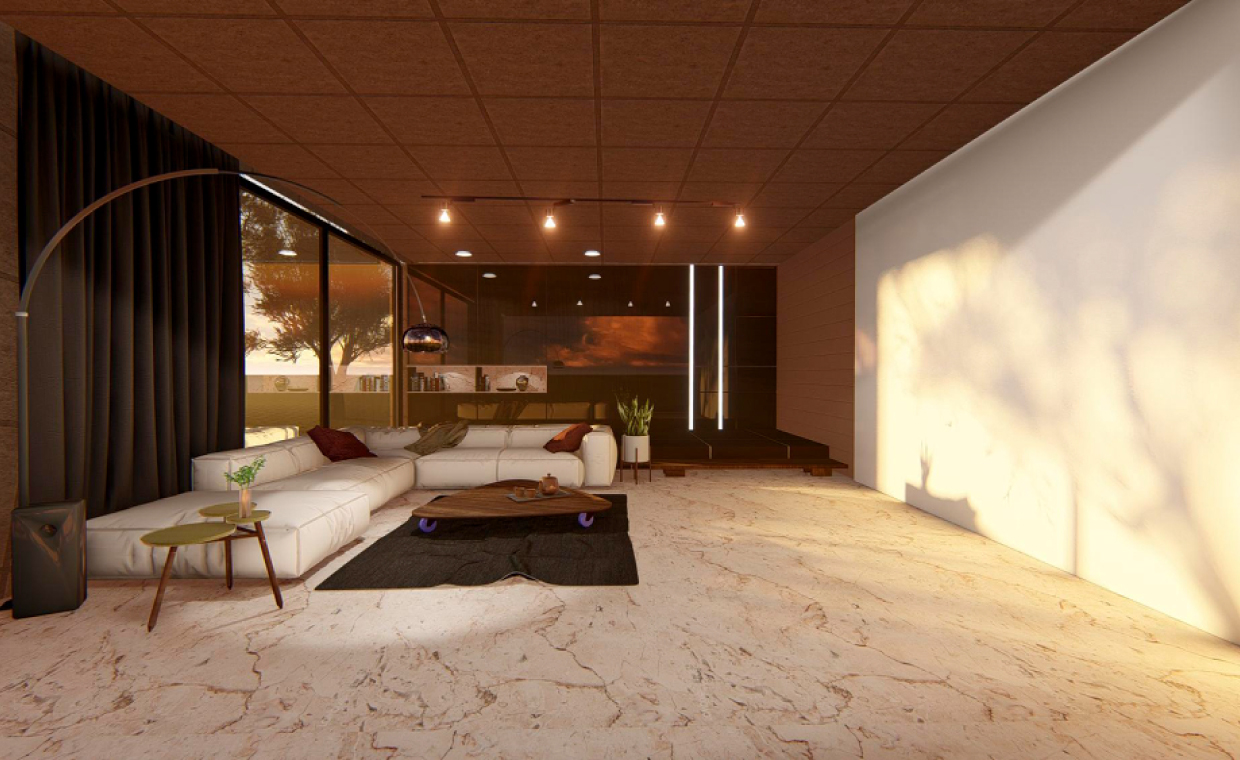
Masonry is used since ancient time and till date it holds the popularity. It is believed to be the strongest and most durable throughout the world. In the earlier times, stones were widely used as a masonry unit. But in the present time, bricks are one of the most extensively used building materials in the construction industry. As masonry units, these bricks are popular particularly with developing countries as they are economical, durable, easy to handle and easy to work with. Buton the flip side, they have some drawbacks too. Clay, which is the primary raw material of the conventional brick, is obtained from the topsoil of the earth’s surface but because of the continuous and fast production of bricks, the fertile topsoil is lost. Thus, the lack of such topsoil reduces the availability of agricultural land. Moreover, during its manufacturing the harmful Co2gas is emitted which is an environmental hazard. Hence, the conventional bricks are not considered as an environment-friendly masonry unit. Thus, it becomes crucial and essential to find a better alternative for conventional bricks. Fly ash bricks and hollow concrete blocks have proven to be good alternative sand is gaining much popularity these days.
Hence, in this article, we have discussed hollow concrete blocks VS fly ash bricks. Both of them are befitting options for conventional bricks. The comparison in this article will help you select the right masonry unit for your home construction. In our previous article we have already explained in detail the difference between concrete blocks vs clay bricks.
01. General
- According to ‘Indian Standard – IS 2185 (Part-1) 2005’, ‘Hollow concrete blocks have one or more large holes or cavities which either pass through the block (open cavity) or do not effectively pass through the block (closed cavity). They have the solid material between 50 and 75 % of the total volume of the block calculated from the overall dimensions. These holes or cavities reduce the total cross-sectional area and volume of the block.’
- Fly ash bricks are eco-friendly bricks which are made using fly ash or pulverized fuel ash. They are also called pulverised fuel ash – lime bricks. They are 100% solid and they do not have any cavity unlike Hollow Concrete Blocks.
02. Raw Material
- Hollow concrete blocks consist of a mixture of cement, aggregates, sand or gravel and water. Sometimes industrial waste like fly ash, bottom ash etc. are also used in their manufacturing.
- Fly ash bricks are made from the mixture of fly ash or pulverized fuel ash, cement, sand, lime and gypsum.
03. Usage
- Hollow concrete blocks are used in all type of masonry construction such as,
a. Exterior load-bearing walls
b. Interior load-bearing walls
c. Curtain walls
d. Partition wall and panel walls
e. Backing to stone, brick, and other facing
f. Fireproofing over a structural member
g. Fire-safe walls around elevators and stairwells
h. Piers, retaining walls, column etc.
- Due to their strength and durability, fly ash bricks are used in various types of construction for both load bearing and non-load bearing walls. They are also used for other purposes such as,
a. Raising Infrastructures
b. Factories
c. Warehouse
d. Power plant
e. High rise structures etc.
f. Construction of pavements
g. Tanks, under water works
h. Canal lining
i. Irrigation work
04. Advantages
- One of the significant advantages of hollow concrete block is its high durability and less weight. Thus, there is less dead load which ultimately saves reinforcement steel in RCC structure.
- Hollow concrete blocks masonry is an easy and faster construction practice compared to any other conventional masonry practices.
- Concrete hollow blocks are environment- friendly as industrial wastes like fly ash or bottom ash are used as the raw material.
- Concrete hollow blocks provide comfortable interiors due to thermal insulation.
- The hollow blocks have a rough texture which facilitates them in imparting a good bonding between cement mortar and blocks.
- A semi-skilled labour can also work with hollow concrete blocks.
- Hollow blocks are good sound insulator.
- They are also good earthquake resistant.
- Water absorption of hollow blocks is comparatively less than fly ash bricks.
- As blocks are larger in size, there is less number of joints. And thus, mortar consumption is less.
- Reinforcing with steel is also possible with hollow concrete blocks.
- The blocks are lighter in weight hence, easy to lift. Also, steel required is less due to less dead load.
- Hollow concrete blocks can be used in the construction of load-bearing structure up to 6 storeys using steel.
- As steel is used there is less dead load. Thus, hollow concrete reinforced masonry structures have better earthquake resistant.
- Special hollow concrete blocks can also accommodate horizontal reinforcements so that horizontal beams such as lintels and horizontally strengthened reinforced concrete bands can be built with these blocks.
- Fly ash bricks are made by using a by-product of the thermal power plant which otherwise has a disposal issue. Thus, they are an eco-friendly option which takes care of the environment from being polluted.
- Fly ash bricks have high fire insulation.
- Fly ash bricks are very strong and sturdy; and hence there is almost no breakage during their transportation.
- The uniform size of fly ash bricks reduces mortar requirement for joints and plaster.
- Fly ash bricks provide good thermal insulation.
- Different sizes of fly ash bricks are not required for lintel, sill, and jamb.
05. Disadvantages
- Hollow blocks are poor heat insulator as they have less thermal mass.
- As compared to fly ash bricks, hollow concrete blocks are expensive for the construction of a house. However, it depends upon the cost at which it is available in the local market.
- It is not easy to install concealed wiring in hollow concrete block masonry.
- Different sizes of blocks are required and manufactured for lintel, sill, and jamb.
- The mechanical strength of fly ash bricks is less, but it can be enhanced by adding marble waste or mortar between blocks.
- There is limitation to its size. Only modular size can be manufactured. Manufacturing the large size will lead to more breakages.
- As this brick lack the heat absorbing capacity, it is recommended for the subtropical region or particularly for the regions where the climate is warm. It is not much helpful in the cold regions or even during winter season.
- They are heavy in weight compared to hollow block.
- Concealed wiring is possible in this masonry work.
- It is not possible to use steel in fly ash brick masonry work.
06. Identification On Site
- Concrete hollow blocks are grey in colour.
- Fly ash bricks are usually tan to dark grey.
07. Properties
a) Size Available in Market
According to ‘Indian Standard – IS 2185 (Part-1) 2005’, the nominal dimensions of concrete block are as follows:
• Length: 400, 500 or 600 mm
• Height: 200 or 100 mm
• Width: 50, 75, 100, 150, 200, 250 or 300 mm
- As per ‘Indian Standard -IS 13757: 1993 (Burnt Clay Fly Ash Building Bricks-Specification)’, the size of fly ash bricks are as follows:
• Standard modular size 190x90x90mm
190x90x40mm
• Standard Non modular size 230x110x70
230x110x30
b) Dimension Tolerance
- The variation in the length of the units shall not be more than ±5 mm, variation in height and width of units, not more than ±3 mm.
- The dimensions of bricks when tested in
accordance with ‘IS 12894:2002’ shall be within the following limits per 20 bricks:
a) For modular size
Length3720 to 3880 mm (3800± 80 mm)
Width 1760 to 1840 mm (1800 ± 40 mm)
Height 1760to 1840 mm (1800 ± 40 mm)
(For 90 mm high bricks)
760 to 840 mm (800 ± 40 mm)
(For 40 mm high bricks)
b) For non-modular size
Length 4520 to 4680 mm (4600 ± 80 mm)
Width 2240 to 2160 mm (2200 ± 40 mm)
Height 1440 to 1360 mm (1400 ± 40 mm)
(For 70 mm high bricks)
640 to 560 mm (600 ± 40 mm)
(For 30 mm high bricks)
c) Dry Density
- Dry density of hollow concrete block varies from 1100 to 1500kg/m3.
The variation depends upon the grade of the concrete and the extent of cavity.
- Dry density of hollow concrete block varies from 1100 to 1500kg/m3.
The variation depends upon the grade of the concrete and the extent of cavity.
d) Weight
- It depends on the density and size of the block.
- It depends on the density and size of the brick.
e) Compressive Strength
- Compressive strength of hollow concrete blocks ranges from 3.5 to 15.0 N/mm2, depending upon the grade of block
- Compressive strength of fly ash bricks ranges from 3.5 to 35 N/mm2, depending upon the class bricks.
f) Water Absorption
- Water absorption of hollow concrete blocks should not exceed10% of its weight.
- Water absorption of fly ash bricks should not exceed15-20% of its weight. Thus, its normal water absorption is higher.
g) Termite Resistant
- Both have good termite resistance property.
Also Read: Make Your Home Termite Free with these Termite Prevention Tips!
- Both have good termite resistance property.
h) Thermal Conductivity
- Thermal conductivity of hollow concrete block is 0.12-0.17 W/m K.
- Thermal conductivity of fly ash brick is 0.3 – 0.4 W/m K.
i) Sound Insulation/Noise Transmission
- Sound insulation is defined as the capacity to reduce sound transmission by the building elements.
- Sound transmission depends upon the thickness of the wall.
- The hollow concrete blocks wall has good sound insulation property because of its dense structure.
- Fly ash bricks have moderate sound insulation property.
08. Efficiency
a) Mortar Consumption
- Mortar required is less as compared to the fly ash bricks.
- Mortar required is more as compared to the hollow blocks.
b) Breakage and Utilization
- Negligible breakage. However, it depends upon basic quality.
- Negligible breakage. Almost utilization is possible.
09. Cost
- A hollow concrete block might be costlier than a fly ash brick, but if you consider the overall cost of masonry, it will be low. This is so because it consumes less mortar.
- Fly ash bricks are cheapest, but the overall cost rises high as they require more mortar compared to the hollow concrete blocks.
We have also written article on the cost comparison of AAC blocks and Red Bricks.
10. Environment Impact
- Hollow blocks are environment-friendly building material.
- They are also energy-efficient because of their insulating properties.
- Due to reduced energy consumption, they help in building a green city.
- Fly ash bricks are also environment friendly building material.
- Fly ash is the primary material of fly ash bricks which is the waste of the thermal power plant. Hence, the use of fly ash in bricks helps to overcome its disposal problem.
- A very low amount of Co2 is emitted during its manufacturing process.
Conclusion
With such a detailed comparison between the hollow concrete blocks and fly ash bricks, we are sure this article will help you in making a precise selection for the walls of your home. In a nutshell, both fly ash bricks and Hollow concrete blocks are environment friendly as their raw material comprises of industrial waste which would otherwise create a disposal issue. Thus, it has given a smart solution for the disposal industrial waste. We hope, the above comparison between hollow concrete blocks and fly ash bricks will help you in making judicious and rational choice as per your need and the type of construction you would be going ahead with.We have also tried to compare different materials; here is the list of the same.
Clay Bricks Vs Hollow Clay Bricks: Choose the Right Construction Material
Solid Concrete Blocks Vs AAC Blocks: How to Make the Right Choice
Comparison of Red Bricks vs AAC Blocks vs Fly Ash Bricks vs Solid Concrete Blocks vs CLC Blocks






























